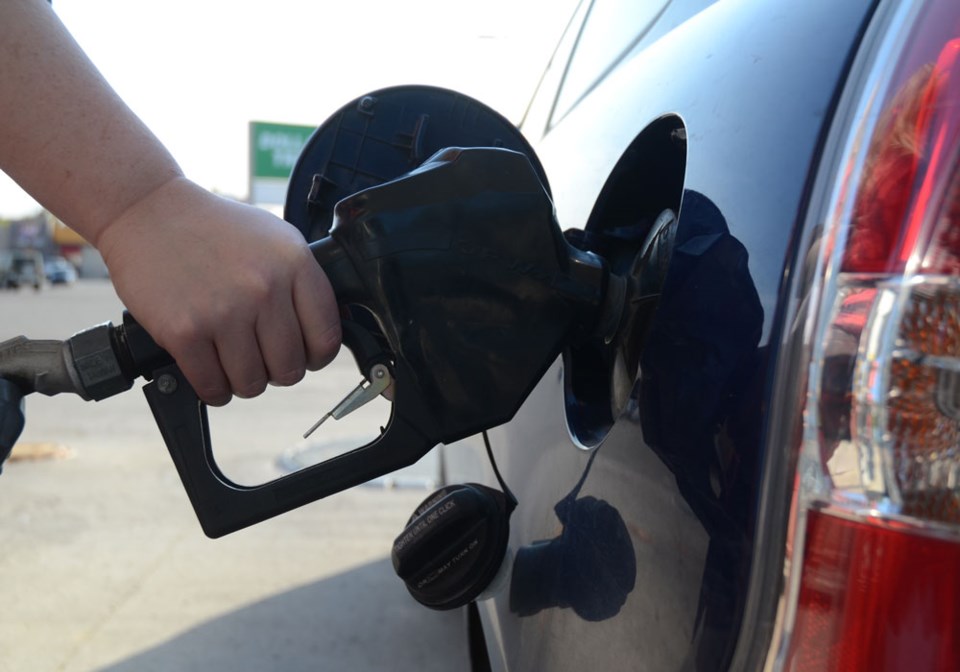Bewildered motorists at gas stations continue to pump big bucks into their fuel tanks despite oil prices hitting a new low last week, but according to experts, the summer season is regularly accompanied by a disconnect between oil and gas prices.
Jason Toews, co-founder of GasBuddy.com, which is a provider of retail fuel pricing information and data in Canada and the United States, said integrated oil companies like Shell Canada often set the bar for gas prices. During peak demand, which is usually during the summer driving season, those companies adjust their prices accordingly to meet demand, regardless of where the price of oil sits.
"If people are driving more, companies have to raise prices so they can actually meet demand," Toews said, adding refineries nowadays are usually only built or expanded during these peak periods. "They don't overbuild refineries these days, it costs billions to expand, so they typically build them for peak demand, which happens during the summer driving season."
As a result of increased prices during the summer, some people's driving habits become more efficient. Families decide to stay home rather than go for the long road trip. That drop in the number of motorists on the road makes it easier for major integrated oil companies to meet that peak demand.
In addition, Toews said the recent partial shutdown of British Petroleum's refinery in Whiting, Ind., which is one of the state’s largest refinery facilities, has impacted gas prices across Canada.
As the summer driving season comes to an end, however, motorists will get some relief at the pumps.
"Generally for the winter, we'll experience 80-something cent gas prices, with the bottom С����Ƶ in the 70 cent a litre range sometime in December or January," Toews said. "As September rolls in, you're going to see them (oil and gas prices) mirror each other more often."
Toews referred to the initial drop in oil prices in 2014 after the summer driving season, and noted how gas prices dropped significantly as well.
"If you see major drop in oil, it will largely be followed with drop in gas prices," he said.
Commercial truck drivers monitor gas prices closely on a daily basis, and even with the expected price drop coming in the winter, many companies within the truck transport industry have turned to other methods of conservation and efficiency.
Nicole Sinclair, membership services liaison for the Saskatchewan Trucking Association said the downturn in oil prices has hit the trucking industry hard, but efficiencies have been found, sometimes in the simplest of forms.
"There are a lot of different factors, but because there are a lot of different factors, you can find certain efficiencies with each one," she said.
United Parcel Service (UPS) trucks, for example, only turn right. According to priceonomics.com, a site dedicated to concisely structuring large amounts of data from the web, UPS trucks have been avoiding left turns since 2004. The company's tracking data confirmed that turning against traffic resulted in long waits in the left-hand turn lane that wasted time and more importantly, fuel.
Sinclair said since UPS adopted this new tactic, the company's profits have soared. Other trucking companies are now looking to adopt similar fuel-saving techniques and are ensuring their drivers are well aware of the small details that can ultimately save them from making frequent stops at the gas station.
"It's little things like that you wouldn't think matter … these huge pieces of equipment are actually very tender pieces of machinery," she said. "Every time you touch the brake, every time you touch the gas and every time you shift, there is the possibility of increased efficiency or deficiency. It's companies that take advantage of the little things that really make the difference."
Though many truck drivers don't have the freedom to fill up wherever they want due to agreements with specific fueling stations, Estevanites have the advantage of several options when it comes to choosing a gas station. According to GasBuddy.com, gas prices in the Energy City on Aug. 24 ranged from $1.15 to nearly $1.19 per litre.
"If you have an SUV or a truck, that price difference can make a huge difference," Toews said.
On Aug. 25, the average gas price in Saskatchewan is $1.16 per litre, with the lowest price hovering around $1.06 per litre.




